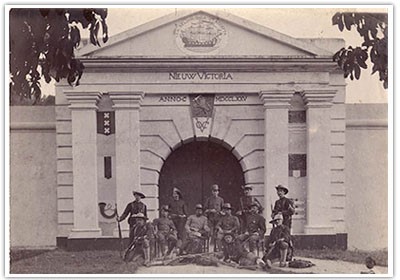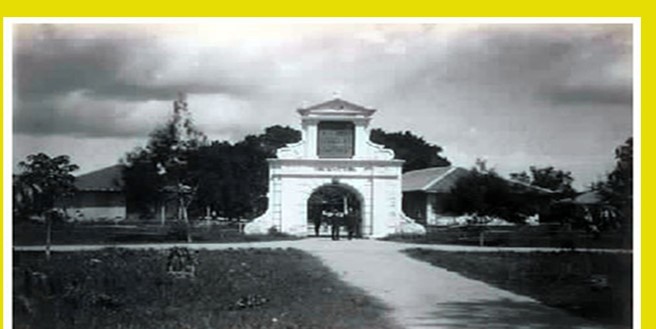Reconstruction of Fort Nieuw Victoria historically indicates Portuguese’s heritage. It was built when people of Hative and Tawiri were expelled by the Hitu society. Portuguese evacuated to a placed around the fort called Honipopu as a territory of Aman or Hena village from one of Uli Soya (Federation of Soya village), a swampy place which was used as rainwater reservoir and stream flow of Pulu Gangsa, an area where sago and bamboo tree was overgrown.
Valentjin and Rumphius verified that Portuguese felled sago and bamboo trees during the fort’s construction because the area was considered by the geostrategic as the suitable place to stay and store the spices before picking up to freighter.



The fort was built at 1575 under the rule of the Governor Gaspar de Mello. In 1588, it had been finished and named as Nossa Sendora Da Anuciada which means the place where Mother Marry raised. However, the local people mentioned it as Fort Kota Laha or a fort of deep bay. The fort consists of four corners. Two corners at west and others stick out into the sea. The local people around the fort worked as unskilled workers during the construction of Fort Victoria.
The fort was a central fortress of Portuguese when they were defeated in war against Sultan Babullah. Portuguese moved from Ternate and focused public activities on this fort which figured out an urban life. In 1600 Steven Van der Haghen made a good relationship with The Leader Tepil of Hitu in order to besieged Fort Kota Laha. Unfortunately, they were failed because of the strong defense. Therefore, The King of Portuguese gave a privilege become a city based on the standard of the European cities. It was when Ambon was born which is called Citade Amboina.
Some villages around the fort like Soa Ema, Soa Kilang, Soya Kecil, Silale and Urimesing grew and became one city.
In 1602 under the rule of Admiral de Mendoza, the expedition fleet was ordered to take control Fort Kota Laha of Dutch’s threat and attacked Hitu as the central fortress of the Dutch. However, it was not running well when The King of Portuguese took away Admiral de Mendoza from Ambon and made Portuguese’s fortress weak. Steven Van der Haghen and people of Hitu knew how to exploit this weakness by attacking and getting on Fort Kota Laha. Furthermore, Fort Kota Laha fell into the clutches of the Dutch on February 23rd. The name of fort changed to Victoria means glory. In 1898, it was restored during the rule of the Governor Artus Gijels who renamed it as Nieuw Victoria.
The Fort Victoria had become a central place of resistance between The Republic of South Maluku (RMS) rebellion and the Army of Federal Republic of Indonesia (APRIS).
The north side of Fort Victoria
Giant cannons can be found inside the fort as well as carved statues of selected wood, Ambon’s enlargement Map of 17th to 19th century and several paintings of Dutch Administrators in Maluku. These remain the visitors how Ambon grow since it was born till nowadays.
The Fort Sketch in 1960
The road located in front of fort known as Boulevard Victoria connects to Honipopu Beach. A sunset over a beautiful Ambon city bay can be seen right in front of the fort.
On September 28th 1950 the army arrived at Ambon city to take over Fort Nieuw Victoria by the closed battle which made Lieutenant Colonel Slamet Riyadi died. However, all cities could be controlled by the Army of Federal Republic of Indonesia (APRIS). By the fall of Ambon, the power of The Republic of South Maluku (RMS) was broken.





